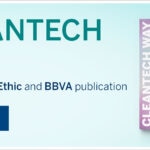-

Carlota
-

Victoria Santillana
Regulation Senior Manager BBVA
NEWS BBVA.COM
BBVA CEO Onur Genç believes that decarbonization requires ‘massive’ capital investments. “Europe needs large banks to finance clean technologies, or ‘cleantech’, on a greater scale,” he said at an event held at the bank’s headquarters in Madrid.
Annual General Meeting
Cleantech is key to moving toward sustainability, although to continue growing it must overcome certain challenges, notably the €50 billion investment gap that currently exists in Europe until 2030, according to Cleantech for Europe. Public-private partnerships and the development of innovative solutions are essential to unlock its potential and ensure wider access to clean technologies.
A new way of understanding banking
We transform ourselves to put in your hands all the opportunities of the world
Find outSustainability
-

Silvia Irazoqui González
Regulation Manager
-

Sofía Galipienso--
European Public Affairs - Senior Policy Adviser
Innovation
Some podcasts you should listen to
39:05Audio



